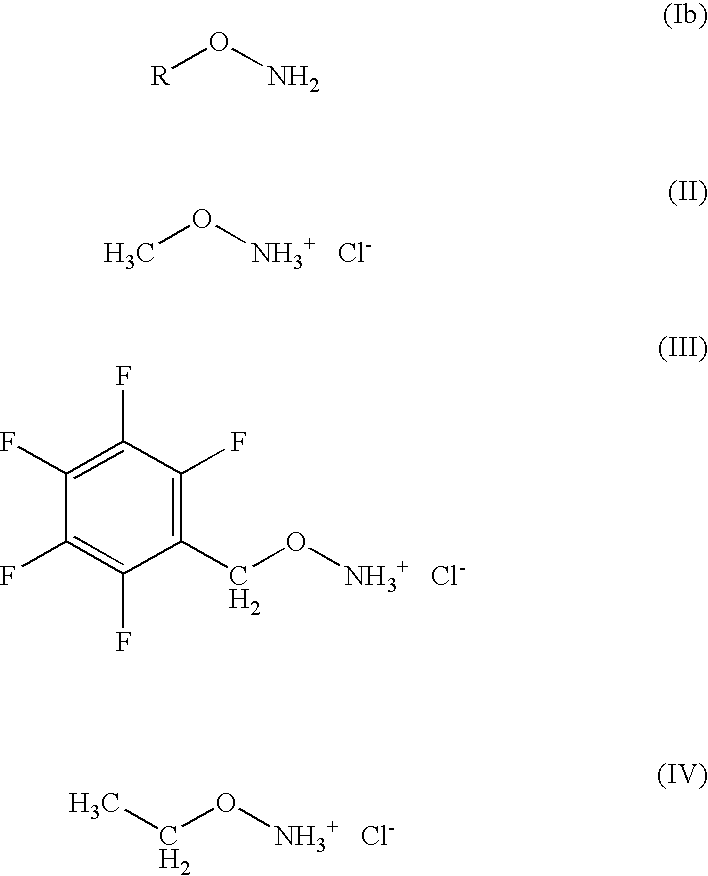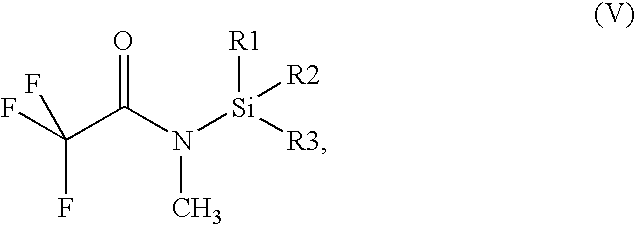Method for the extraction and analysis of contents made from organic material
a technology of organic material and contents, applied in the field of extraction and analysis of contents made from organic materials, can solve the problems of limited control of physiological states during growth, development or as a response to environmental stress, and the inability to correlate changes in mrna or protein level or their activity, and the effect of limited automation
- Summary
- Abstract
- Description
- Claims
- Application Information
AI Technical Summary
Benefits of technology
Problems solved by technology
Method used
Image
Examples
example 1
Sampling and Sample Storage
[0134]Sampling takes place directly in the phytotrone chamber. The plants were coupled using small laboratory scissors, weighed rapidly on a laboratory scale, transferred into a pre-cooled extraction thimble and placed into an aluminum rack cooled by liquid nitrogen. If required, the extraction thimbles can be stored in the freezer at −80° C. The time between cutting off the plant and freezing the plant in liquid nitrogen does not exceed 10 to 20 sec.
example 2
Freeze-Drying
[0135]Care was taken that, during the experiment, the plants either remained in the sub-zero state (temperatures <−40° C.) or were freed from water by freeze-drying before they came into the first contact with solvents.
[0136]The aluminum rack with the plant samples in the extraction thimbles was placed into the pre-cooled (−40° C.) freeze-drier. The initial temperature during the main drying step was −35° C., and the pressure was 0.120 mbar. During drying, the parameters were altered following a pressure and temperature program. The final temperature after 12 hours was +30° C., and the final pressure was at 0.001 to 0.004 mbar. After the vacuum pump and the refrigerating installation had been switched off, the system was ventilated with air (dried by means of a drying tube) or with argon.
example 3
Extraction
[0137]Immediately after the freeze drier was ventilated, the extraction thimbles with the freeze-dried plant material were transferred into the 5 mL ASE extraction cartridges.
[0138]The 24 sample positions of an ASE apparatus (Accelerated Solvent Extractor ASE 200 with Solvent Controller and AutoASE software (DIONEX)) are filled with plant samples.
[0139]The polar substances were extracted with approx. 10 mL methanol / water (80 / 20, v / v) at T=70° C. and p=140 bar, 5 min heating phase, 1 min static extraction. The more lipophilic substances were extracted with approx. 10 mL of methanol / dichloromethane (40 / 60, v / v) at T=70° C. and p=140 bar, 5 min heating phase, 1 min static extraction. The two solvent mixtures are extracted into the same sample tube (centrifuge tube, 50 mL, with screw top and piercible septum for the ASE (DIONEX)).
[0140]Internal standards were added to the solution: ribitol, L-glycine-2,2-d2, L-alanine-2,3,3,3-d4 and α-methylglucopyranoside, and methyl nonadeca...
PUM
| Property | Measurement | Unit |
|---|---|---|
| pressure | aaaaa | aaaaa |
| temperature | aaaaa | aaaaa |
| pH | aaaaa | aaaaa |
Abstract
Description
Claims
Application Information
 Login to View More
Login to View More - R&D
- Intellectual Property
- Life Sciences
- Materials
- Tech Scout
- Unparalleled Data Quality
- Higher Quality Content
- 60% Fewer Hallucinations
Browse by: Latest US Patents, China's latest patents, Technical Efficacy Thesaurus, Application Domain, Technology Topic, Popular Technical Reports.
© 2025 PatSnap. All rights reserved.Legal|Privacy policy|Modern Slavery Act Transparency Statement|Sitemap|About US| Contact US: help@patsnap.com



